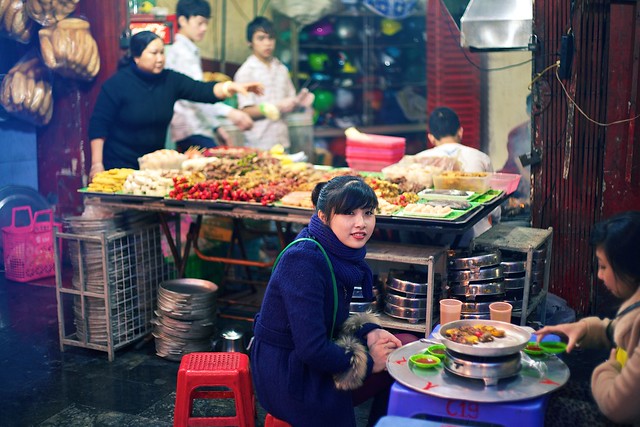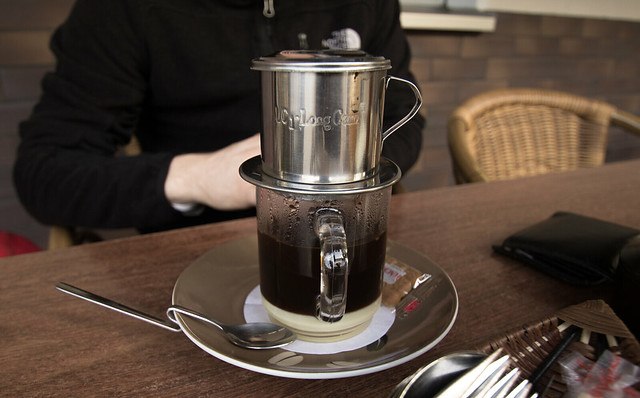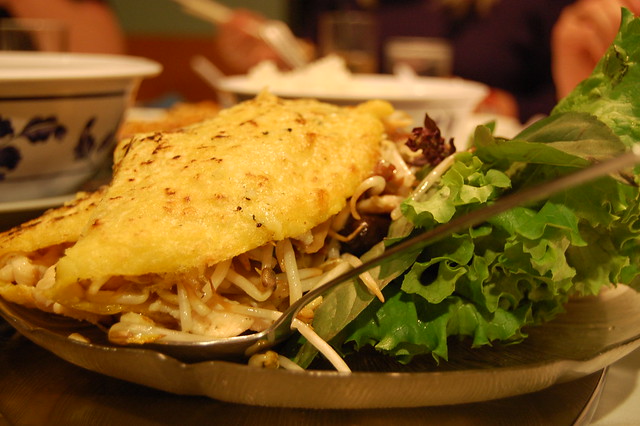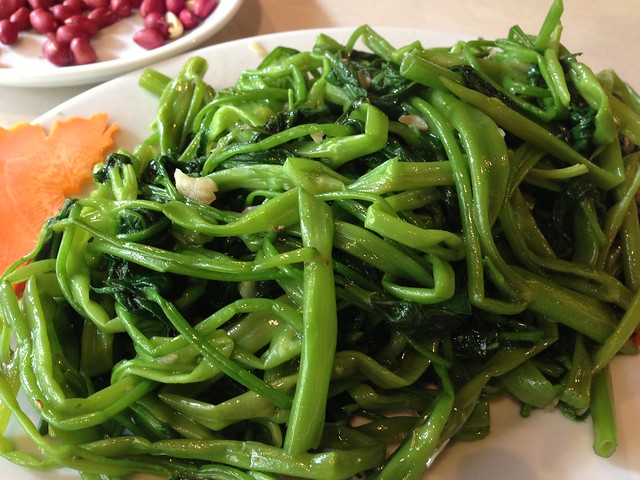Vietnam is a culinary powerhouse, and if you’re about to visit this country, you’re tastebuds are going to have a blast. Not quite sure what you’re in for? Not knowing what to eat in Vietnam is a good problem to have! Before you hit the street food and local markets and restaurants to sample the local dishes, here’s your complete guide to Vietnamese cuisine.

What ingredients are used in Vietnamese cuisine?
Thanks to the diversity of the country, many Vietnamese dishes have their own unique taste. Recipes in the northern region of the country borrow from China, in the south, flavours take on Thai and Cambodian notes, and dishes are a little sweeter incorporating ingredients like coconut milk, for example.
Vietnamese cuisine doesn’t have a lot of oil or dairy. Different cooking methods are used to fuse proteins, textures, herb and vegetables into a fragrant and intoxicating experience. Dishes may be light, but they are packed with flavour and incredibly balanced. Each mouthwatering element compliments the other, no single ingredient overpowers the other, and that is one of the alluring characteristics of Vietnamese cuisine.
Most dishes are cooked with ingredients like fish sauce, shrimp paste, soy sauce, bean sauce, rice, fresh herbs, fruit and vegetables. Lemongrass, ginger, cinnamon, bird’s eye chilli, and lime are other popular ingredients used to create harmony between sweet and sour, salt, and heat.
Things to know:
- The use of fresh herbs is a crucial feature of many dishes, often added at the last minute to lift the dish. Meals are often accompanied by cilantro, mint, basil leaves, and scallions for example. Make use of these aromatics to heighten your experience.
- Rice makes its way into breakfast, lunch, dinner and even dessert! This essential ingredient is used to make noodles, porridge, snacks, and even rice wine.
- Fresh dairy may not be a common element in Vietnamese cuisine, but there’s plenty of condensed milk for the drinking. This sweet, thick syrupy milk is used to lace Vietnam’s famous white coffee with a sumptuous, sugar-laden hit.

Heritage and philosophy
The Chinese domination of Vietnam began in 111 BC and is widely believed to have ended in 938 AD. As a result, there’s a tradition of Chinese medicine in Vietnamese cooking, many dishes embrace the tenets of yin and yang and the cuisine has five elements (wood, fire, earth, metal, and water) to it which correspond to spices, organs, colours, senses and nutrients.
| Wood | Fire | Earth | Metal | Water | |
| Spices | Sour | Bitter | Sweet | Spicy | Salty |
| Organs | Gall Bladder | Small Intestine | Stomach | Large Intestine | Urinary Bladder |
| Colours | Green | Red | Yellow | White | Black |
| Senses | Sight | Taste | Touch | Smell | Sound |
| Nutrients | Carbs | Fat | Protein | Minerals | Water |
Things to know:
- Vietnamese dishes have a balance between the five nutrients and try to incorporate the five colours outlined in the table above.
- Taking nutrients, colour into account and the experience of eating a dish, Vietnamese cuisine allows foodies to go on a sensory journey.
- Each sense comes into play while enjoying Vietnamese food, for example, the colours in a meal capture the eyes, the fragrance of it tease our sense of smell, sound comes from different textures found in the dish, for example, crunch, and our sense of touch comes into play when we use our hands to sprinkle herbs or even eat with!
- Dishes take into account the principles of yin and yang. So, cool foods are paired with warm foods. For example, spicy food is considered hot and is often paired with sourness, because it is considered cool in Vietnamese cooking. Likewise, cool ingredients like seafood may be paired with a warming ingredient like ginger, and meats like chicken and pork are also warm, so often eating in the winter.
Culinary traditions
Although the dishes vary across the different regions of Vietnam, there are some fundamental practices to which cooks and chefs throughout the country adhere.

- Food is eaten as fresh as possible! Especially vegetables, and when they are cooked, normally boiled or stir-fried, heat is applied only briefly.
- Herbs are an important component of every meal, and dishes are rarely served without them.
- Opposing textures are essential, food that has a bite to it will have something soft or watery to balance it.
- Northern cuisine is not as spicy because the colder climate cannot support the cultivation of such plants and crops. Instead, dishes rely on fish sauce, limes and soy sauce for flavour.
- The mountainous region in the centre of Vietnam is prime for producing spices. The cuisine found in this part of the country is renowned for its heat.
- The southern areas of the country make use of the bounty found along the sprawling coastline to add flavour to dishes. The Coconut milk, seafood and fruit and crops that flourish in the warmer weather are a mainstay of the cuisine from these parts.
Don’t just eat pho and banh mi
The best way to wrap your tongue around Vietnam’s noodle-based soup culture is by tucking into a bowl of pho. And you can discover the country’s complex past in one bite by munching on a banh mi – a Vietnamese sandwich on a crusty white baguette – an influence from the days of French colonisation, but there’s so much more to eat! If you’re not sure where to start, explore Vietnam’s rich history and culture through its cooking methods and ingredients by devouring the following dishes!

- Cao lau is a Hoi An speciality that cannot be missed out on. A delightful dish encompassing pork, crisp crackers, chewy rice noodles, fresh aromatics, and a touch of broth.
- Rau muong xao toi is made from water spinach, a common vegetable found in the tropic regions of Vietnam. This simple dish sees the water spinach stir-fried with garlic and a couple of other ingredients, but yields flavoursome results.
- Goi cuon is the lighter version of a spring roll. Rice paper is filled with vermicelli, julienned vegetables, protein and rolled up tight and served alongside a spicy hoisin, garlic and peanut butter dipping sauce.
- Banh xeo is a savoury turmeric crepe that can be stuffed with a number of fillings and dunked in a fish sauce dressing.
- Goi xoai is a vibrant salad. Slivers of sour and crunchy unripened green mango are toppled on to fresh herbs such as mint and basil along with carrots and peanuts. The colourful heap is topped with shrimp or beef and a final flourish of fried shallots.
- Bun bo Hue comes from Vietnam’s imperial city of Hue, consider it a feast in a bowl. A glimmer of red oil glistening on the surface gives way to a beefy broth with so much depth of flavour, thanks to hours of simmering. This golden liquid is fragrant lemongrass, seasoned with sugar, shrimp paste and chili, packed with thick noodles, various meats, and finished with lime and aromatic herbs.

